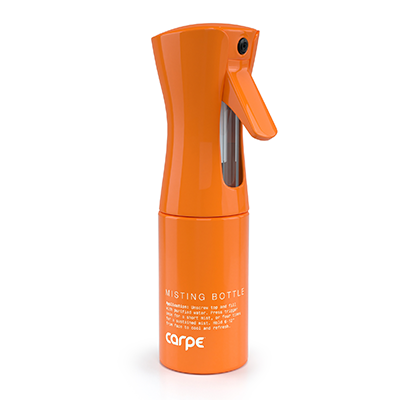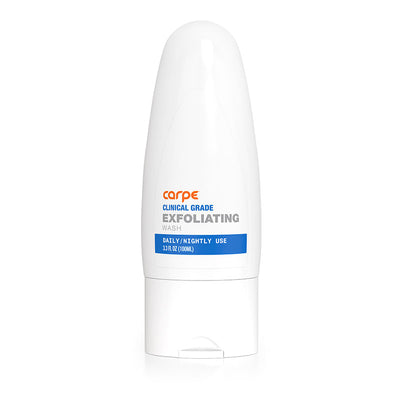Hyperhidrosis is a disorder that causes excessive sweating. It often creates a sense of discomfort and embarrassment for sufferers and it affects millions of people. According to an article in the journal of Dermatological Clinics, approximately 2.8% of people have some form of hyperhidrosis. That is an estimated 7.8 million people in the US alone![1] Other sources suggest that hyperhidrosis is even more prevalent than the current estimates show..[2]
Fortunately, many medical solutions are currently available to help reduce excessive sweating. Antiperspirant, which can be found over-the-counter, is one of the most effective treatments for hyperhidrosis. It is also the first solution that most dermatologists will recommend for their patients. This is because antiperspirant contains an active ingredient that reduces sweat production. Antiperspirants are available over-the-counter and there are even prescription strength antiperspirants you can buy without a prescription.[1]
Many people don’t realize what antiperspirant is or how it differs from deodorant, but they are quite different. The FDA regulates antiperspirant because the active ingredients in it are considered to be drugs, while deodorant is not as strictly regulated. Deodorant is made up of an antibacterial component and a scent which is used to mask the smell of body odor. This can be helpful, especially because deodorant kills bacteria on the skin that cause sweat to smell bad, but it won’t prevent excessive sweating.[2] Sometimes, people find prescription strength deodorant helpful, but they don’t actually reduce sweating. Often, deodorants for hyperhidrosis are combined with an antiperspirant, these are called antiperspirant deodorant. These combination products work well for some, but in certain situations it’s necessary to use separate products, especially in cases that involve moderate to severe hyperhidrosis.
What is in Antiperspirant?
Antiperspirant is a substance that can be applied to the skin in order to reduce sweating. It can be challenging to choose the right over-the-counter antiperspirant because there are so many different options available. However, understanding the active ingredients in antiperspirant can make the decision easier. Most antiperspirants use a type of metallic salt as an active ingredient. This is because they form a superficial plug inside of sweat glands which stops sweat from escaping to the surface of the skin. Aluminum chloride is the most common active ingredient found in antiperspirants and it is usually quite effective. Newer, clinical strength, products often use aluminum chloride hexahydrate or zirconium trichlorohydrex as an active ingredient. These are usually used when aluminum chloride has not provided enough relief or if it causes too much irritation. All of these active ingredients reduce sweating in a similar way, but the clinical strength antiperspirants are thought to be slightly more powerful and less irritating.[1]
Antiperspirants Available Over-the-Counter
For many, physician or dermatologist intervention may not be necessary. Instead, simply purchasing a clinical strength antiperspirant over-the-counter can be a good first step to address your hyperhidrosis. To help decide which antiperspirant may be right for you, we have compiled information on five of the most popular antiperspirants specifically made to address hyperhidrosis. The purpose of this review is to provide an unbiased review of hyperhidrosis treatments, and no organization has paid or otherwise endorsed us to comment on their product. These products are all antiperspirants and don’t contain prescription strength deodorant. For each product, we will present information on five categories:
- Treatment Area: Which area of the body this product is supposed to be applied?
- Type: Is the product in stick, roll-on, lotion, or wipe form?
- Application Instructions: how often to apply the product, when to apply the product, what to avoid when applying the product.
- Active Sweat-Reduction Ingredients: What form of aluminum is in the product? What is the percentage of the aluminum in the product?
- Price: How much is the product? How long will the product last until I must purchase it again?
Carpe
Carpe is an antiperspirant designed to reduce excessive sweating on specific parts of the body for people with hyperhidrosis. Originally, Carpe had both a hand solution and a foot solution. Both solutions are identical in terms of chemical composition. They have more recently come out with sweat solutions for the face, breast, underarms, and groin. The traditional solutions are lotions, and each lotion utilizes the active ingredient aluminum sesquichlorohydrate. The mixture of 15% aluminum sesquichlorohydrate with 85% moisturizing creams works to reduce sweat while avoiding irritating the hands and feet. Although Carpe is specifically bottled for the [3]
CertainDri (Prescription Strength)
Certain Dri is designed as a treatment for axillary hyperhidrosis (underarms). Certain Dri offers three types of antiperspirant, but their highest type, prescription strength antiperspirant, is best suited for addressing cases of hyperhidrosis. This product, Certain Dri Prescription Strength, is an over-the-counter antiperspirant that is made of 12% aluminum chloride and 88% moisturizing and anti-irritating solutions. The antiperspirant is considered a roll-on solution, and Certain Dri’s website recommends that the user apply the product at night to dry skin in order to see the best results. Most people will need to apply the product every other night, although the product may need to be applied nightly or every third night depending on your personal needs. A 1.2 ounce package of Certain Dri Prescription Strength sells for $8.86, and the product will most likely last 5-6 weeks when used every other night.[4]
DuraDry
Like Certain Dri, DuraDry is also designed to treat underarm sweating for those with hyperhidrosis. DuraDry is considered a stick antiperspirant, meaning that the solution is a solid block, like deodorant, rather than a liquid or gel solution in a tube (roll-on). When purchasing DuraDry, It’s highly recommended to purchase both DuraDry Am and DuraDry PM. While using DuraDry PM , the user applies a stronger antiperspirant consisting of 15% aluminum chloride and 85% moisturizing and anti-irritating ingredients in the evening. The next morning, the user applies the weaker antiperspirant and deodorant combination in DuraDry AM. DuraDry AM consists of 20% aluminum zirconium and 80% moisturizing and deodorizing compounds. Although a package of DuraDry is $37.00, the fact that the solution is estimated to last for 200 underarm applications means DuraDry will most likely last at least 4-5 months. DuraDry also has prescription strength antiperspirants available.[5]
SweatBlock
SweatBlock is an antiperspirant wipe that allows the user to reduce sweating and treat axillary hyperhidrosis. However, SweatBlock users have reported that the wipes work to reduce sweating on other regions of the body, and possibly could be used for [6]
ZeroSweat
ZeroSweat is a hyperhidrosis formula that offers two solutions - one to address palmar and plantar hyperhidrosis (hands and feet), and a second method to treat axillary (underarms) hyperhidrosis. The first product, the antiperspirant for hands and feet, is a lotion that is applied typically 2-3 times per day on an as needed basis. The second product, the antiperspirant for axillary hyperhidrosis, is applied on a daily basis. The underarm product is estimated to last 3 months, whereas the hand lotion will most likely last 4-8 weeks. The price for a bottle of ZeroSweat hand lotion is $9.95, and the stick antiperspirant is $14.95.[7]
Besides the products detailed above, there are many antiperspirant products on the market that can help those with hyperhidrosis. Several brands have both a regular strength and prescription strength antiperspirant product. Some brands may also advertise a prescription strength deodorant. Many antiperspirants can be used on problem areas they weren't originally intended for. This can be helpful for people who have excessive sweating in areas other than the hands, feet, and armpits. There are even options for people who need antiperspirant for sensitive areas like the face and groin.[8] Antiperspirant is also a solution doctors often propose when [1] It is also important not to apply antiperspirant right after showering because the water will make it harder for antiperspirant to sink into skin. However, antiperspirant does need to be applied to clean skin, so cleaning your skin, removing any other products, and waiting for it to dry before applying your daily antiperspirant is your best bet.
Dealing with Antiperspirant Issues
Antiperspirant is a lifesaver for many people with hyperhidrosis, but it can cause some functional issues. For example, it can stain clothing. Luckily, there are ways to get antiperspirant out of clothes so that it doesn’t destroy your wardrobe. Stains are already an issue for those who deal with armpit sweating, so it is always a good idea to know how to remove armpit stains from clothing as well. Some people also struggle to remove antiperspirant from skin, but it can be removed by showering with warm water and using a baking soda solution on the affected areas. If you feel like antiperspirant is helping you to reduce sweating but you are still having issues with body odor then you may want to check out a deodorant to use on top of your antiperspirant. This can be a regular deodorant or a prescription strength deodorant.
Sources
- Pariser, D. M. (2014). Hyperhidrosis (4th ed., Vol. 32). Amsterdam: Elsevier Pub. Co., 2014. Retrieved from https://www.elsevier.com/books/hyperhidrosis-an-issue-of-dermatologic-clinics/pariser/978-0-323-32607-0
- Zirwas, M. J., & Moennich, J. (2008). Antiperspirant and Deodorant Allergy Diagnosis and Management. The Journal of Clinical and Aesthetic Dermatology, 1(3), 38-43. Retrieved from https://www.ncbi.nlm.nih.gov/pmc/articles/PMC3013594/
- Clutch Inc. (n.d.). Antiperspirant for Sweaty Hands & Feet. Retrieved May 24, 2018, from https://www.carpelotion.com/
- Certain Dri Inc. (n.d.). Certain Dri® is here for you. Retrieved May 24, 2018, from https://www.certaindri.com/
- DuraDry Inc. (n.d.). Stop Armpit Sweat - Prevent Excessive Armpit Sweating | Duradry. Retrieved May 24, 2018, from https://www.duradry.com/
- SweatBlock Inc. (n.d.). Stop Excessive Sweating and stay dry with Sweatblock! Retrieved June 20, 2018, from https://www.sweatblock.com/
- ZeroSweat. (n.d.). Stop Excessive Sweating. Retrieved May 24, 2018, from https://www.zerosweat.com
- Not Just for Underarms. (n.d.). Retrieved June 20, 2018, from https://www.sweathelp.org/hyperhidrosis-treatments/antiperspirants/not-just-for-underarms






16790753702383.jpg?v=1679075372)

16790746985853.jpg?v=1679074700)


16790757289763.jpg?v=1679075731)










